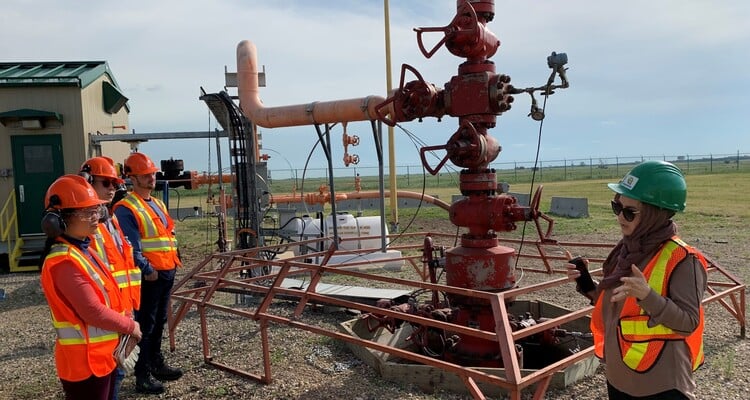The capture, transportation, utilization and underground storage of carbon dioxide is well understood from a technical perspective, with most of the handful of existing CCS/CCUS projects that have been operating over the last decade (or more) doing so with little fanfare or public attention. Indeed, CCS projects in Canada alone have safely stored more than 47 million tonnes of CO2 – the equivalent of taking more than 10 million cars off the road – including the largest CO2 storage site in the world near Weyburn, Saskatchewan, which has safely sequestered more than 38 million tonnes of CO2 over the last 20 years, most of which has come from North Dakota via the Souris Valley Pipeline.
Times are changing, however, as the massive expansion of CCS that is required to meet the world’s ambitious targets for addressing climate change is quickly putting the construction of new infrastructure on the radar of landowners, community leaders, Indigenous groups, environmental organizations, regulatory agencies and a wide range of other stakeholders. This is especially true when it comes to the pipeline projects that are being planned to move large volumes of CO2 from the refineries, factories and other industrial sources where the greenhouse gas is produced to designated locations for permanent storage in deep geologic formations in order to keep it out of the atmosphere.
At least three new CO2 pipelines have been proposed to run across the midwestern United States, prompting questions about safety and potential environmental impacts, as well as the job opportunities and other economic benefits such projects are expected to generate. Recognizing this heightened interest, the Pipelines and Hazardous Materials Safety Administration (PHMSA) held a first-of-a-kind public meeting in Des Moines, Iowa last week to answer questions, provide information, and listen to the input and concerns of those affected by CO2 pipeline development. Kudos to PHMSA for making the extraordinary effort to bring together dozens of experts from the U.S., Canada and the United Kingdom to discuss pertinent aspects of CO2 pipelines from engineering and construction to leak detection, emergency preparedness and response, protection of groundwater, and best practices in communications and stakeholder engagement.
I am grateful for the opportunity to attend the two-day meeting, where I was able to share the Knowledge Centre’s perspective and learn from others who were there. My key take-aways include:
- There is a pressing need for regulations to be developed that are specific to CO2 pipelines. Out of the 3 million miles of pipelines that crisscross the U.S., there is currently only 5,000 miles of CO2 pipeline and they are included in the existing regulations for hazardous liquid pipelines. With as much as 90,000 miles of new CO2 pipeline expected to be built over the next 25 years, it is necessary to develop specific standards for CO2 pipelines, as transportation of high-pressure carbon dioxide presents unique issues relating to how pipelines are designed, built, operated and maintained. The Pipeline Safety Trust has developed an independent report that provides a number of recommendations for improving oversight of CO2 pipelines to enhance public safety.
- Companies and regulators must place a high priority on emergency preparedness and response planning when developing CO2 pipelines, and plans must involve significant input and engagement with local emergency responders and those living near proposed pipelines. PHMSA and other authorities are committed to identifying and applying lessons from the failure of a CO2 pipeline in Mississippi in early 2020 that demonstrated the need for improved training and proper equipment for local first responders. Other steps to improve public safety include enhanced requirements for modelling the dispersion of CO2 in the event of a pipeline rupture and investigating whether adding an odour to CO2 would make it easier to detect a leak.
- As with other pipelines and major infrastructure projects, it is critical for developers to engage with landowners, community officials and others who are directly affected as early as possible. Open and honest engagement includes listening to concerns, answering questions and sharing as much information as possible with stakeholders so that they have a firm understanding of a company’s plans. This allows project developers to address the legitimate concerns of stakeholders in their plans, which generally leads to less conflict and greater chances of long-term success for CCS projects. Sharing details about emergency response plans, in particular, was highlighted as an area of improvement for U.S. projects, after officials with the Canadian Energy Regulator explained how it is mandatory for these plans to be publicly available for federally regulated pipelines in Canada.
The PHMSA meeting clearly demonstrated the value of knowledge sharing to enhance safety, lower risk, and improve the chances of success for the next generation of CCS projects that are getting underway around the world. At the Knowledge Centre, we provide independent technical & strategic support throughout the CCS project development process and across the value chain from CO2 capture to transportation, utilization and storage. Our in-house team and strategic partners include engineers, chemists, legal and policy experts, as well as stakeholder engagement and communications leaders who have worked on CCS and large-scale energy pipeline projects across North America. Bringing our experience from the successes and challenges of past projects inevitably leads to better outcomes for everyone. Or, as we like to say: You don’t have to start from Square One to get to Net Zero!
